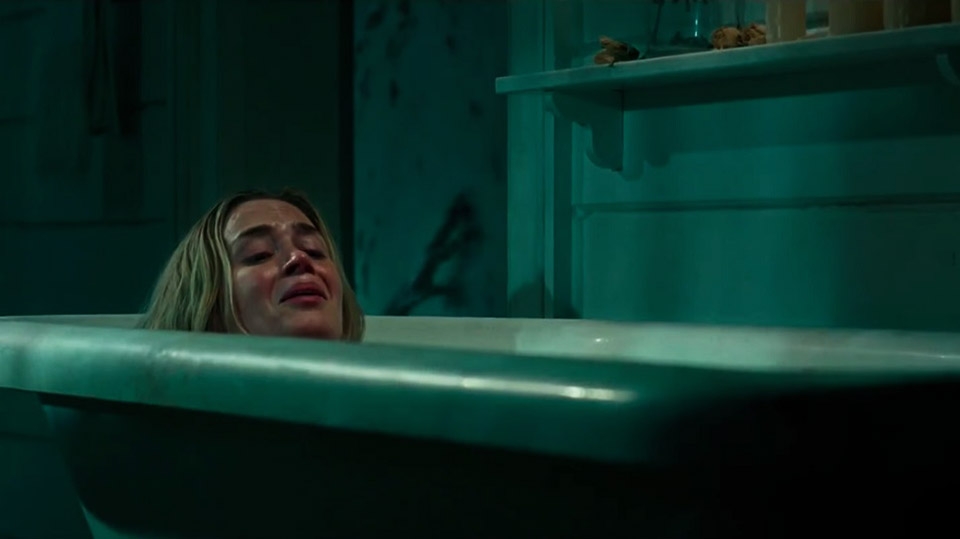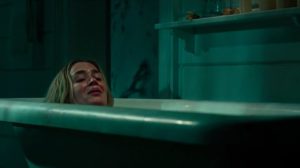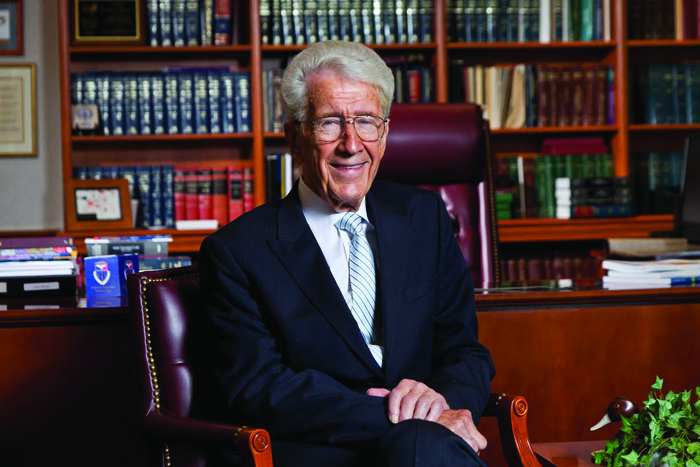

Evelyn Abbott (Emily Blunt) hides from sound-chasing creatures in A Quiet Place.
By Salena Moran & Evan Penrod | Staff Writers
04/12/2018
In an endeavor way outside the realm of his The Office character Jim Halpert, John Krasinski proves both his acting and directing talent, along with the prowess of his wife Emily Blunt, in his original thriller, A Quiet Place.
In the not-too-distant future, husband Lee Abbott (Krasinski), wife Evelyn (Blunt) and their children navigate an abandoned town in silence for fear of the unknown killer creatures that are sharply attuned to sound. While there is no definitive background on the characters, the story jumps right into the turmoil of the plot where the difficulty of remaining silent conflicts with the struggle to survive in the family’s uncertain fate.
As the title heavily hints at, A Quiet Place differentiates itself from other thrillers in that an eerie silence fosters suspense and a sense of unease from the very beginning.
Since every single sound can be the difference between life and death, the movie portrays the physical and mental toll of silence between family members and their outside environment. Roughly 95 percent of this movie has no spoken dialogue, and oddly enough, the use of sound provides little, if any, relief.
The sound designers really ramped up the intensity of little sounds in the background like running water or other nature sounds. Small details are now very blatant and boldly stand out in an entirely silent movie. Even the introduction’s music score is very minimalist, focusing only on a few instruments from the string section and playing as if they, too, exist in this quietly minimal environment.
A Quiet Place also jumps right into the action, as the expositional plot does not weigh down the flow of the movie. Audiences have to pay close attention to the environment as background information can be observed from items like newspaper headlines, news reports and Lee’s diary. Essentially, the audience must be just as in tune to their surroundings like the characters themselves.
Perhaps the most important feature of the movie is the acting itself. The idea of a movie with total silence requires superior acting, and Krasinski and Blunt do not disappoint in their convincing performance. Even Millicent Simmonds, who plays the daughter, Regan Abbott, boasts a stellar performance for her character who also shares her real-life hearing disability. Simmonds and the entire cast focus on the use of sign language to communicate both on and off screen.
While this movie is an overall slam dunk in the realm of recent thriller flicks, there are some minor cinematographic mishaps. For example, any noise at all inevitably comes off as a jump scare since the movie is mostly silent. After so many of these scares, however, the technique loses its luster. Furthermore, the other problem with this film was the monster itself. Without spoilers, it is almost too generic and familiar to other monsters out currently in science fiction media (*ahem… Stranger Things*) both in design and style of movements.
This film does not overstay its welcome, running at only 90 minutes and presenting most everything with a clear and direct flow, leaving the audience completely sustained. This could have been another quick cash grab in a long line of bad or uneventful horror/thriller movies, but what places A Quiet Place above other films is its commitment to silence and seeing that gimmick all the way through. Overall, this is a very solid thriller movie that proves Krasinski can direct as well as act outside of the realm of comedy.




